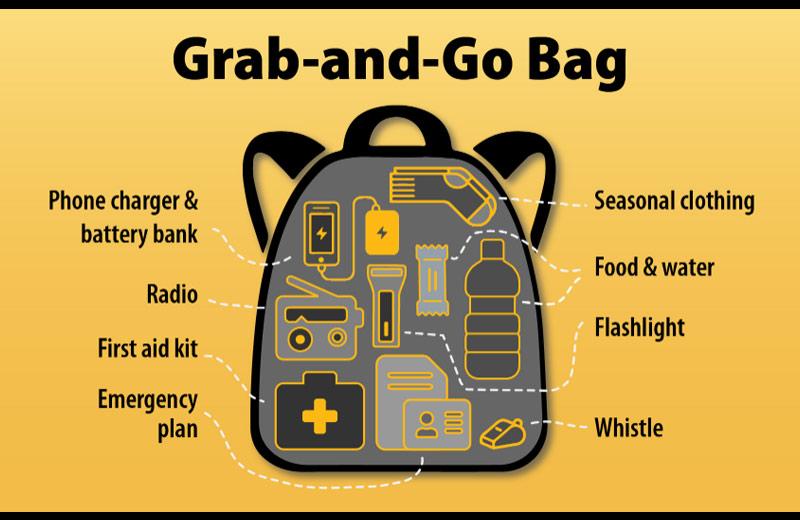(This story was submitted by Jana Hargreaves, Northern Health Coordinator, Health Emergency Management BC.)
Northern Health’s Emergency Management Team wants you and your family to think about personal preparedness and readiness in the event a catastrophe happens. One of the ways you can be prepared is to have a “grab-and-go” bag ready in your home, in case your household utilities are affected (e.g., power loss or contaminated water). You should be prepared to be self-sufficient for at least 72 hours.
The basic emergency kit should include:
- Water – at least two litres of water per person per day. Include small bottles that can be carried easily in case of an evacuation order.
- Food that won't spoil, such as canned food, energy bars, and dried foods (replace food and water once a year).
- Manual can opener.
- Crank or battery-powered flashlight (and extra batteries). Replace batteries once a year.
- Crank, battery-powered radio (and extra batteries) or Weatheradio for continuous weather information and updates when bad weather occurs.
- First aid kit.
- Extra keys to your car and house.
- Some cash in smaller bills, such as $10 bills and change for payphones.
- A copy of your emergency plan and contact information.
- If applicable, other items such as prescription medication, infant formula, equipment for people with disabilities.
- Food, water, and medication for your pets or service animal (personalize according to your needs).
Please see the BC Government’s Build a Household Emergency Kit page for additional information on how to ready yourself, your family, and your home.
Good luck and be prepared!














Comments